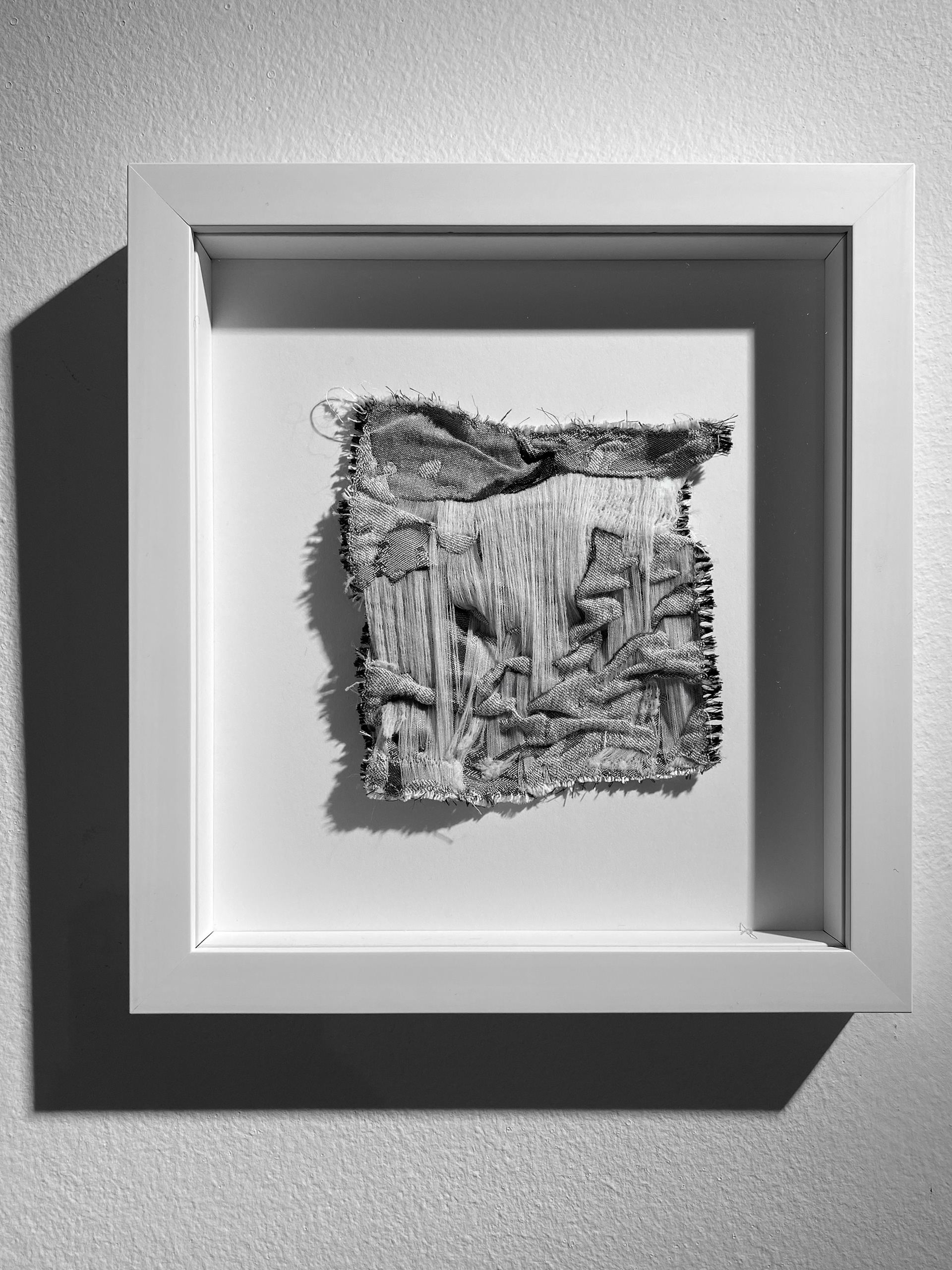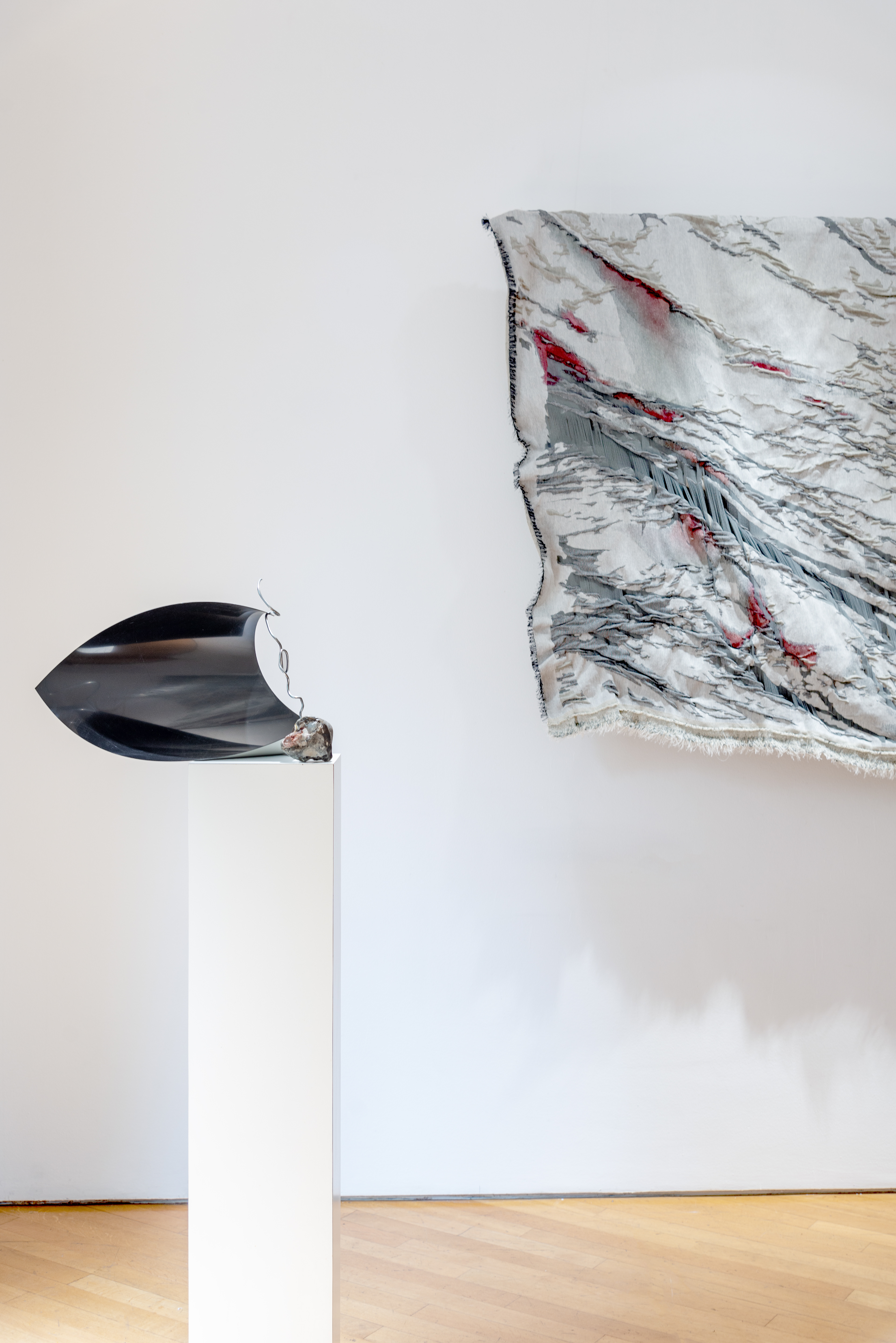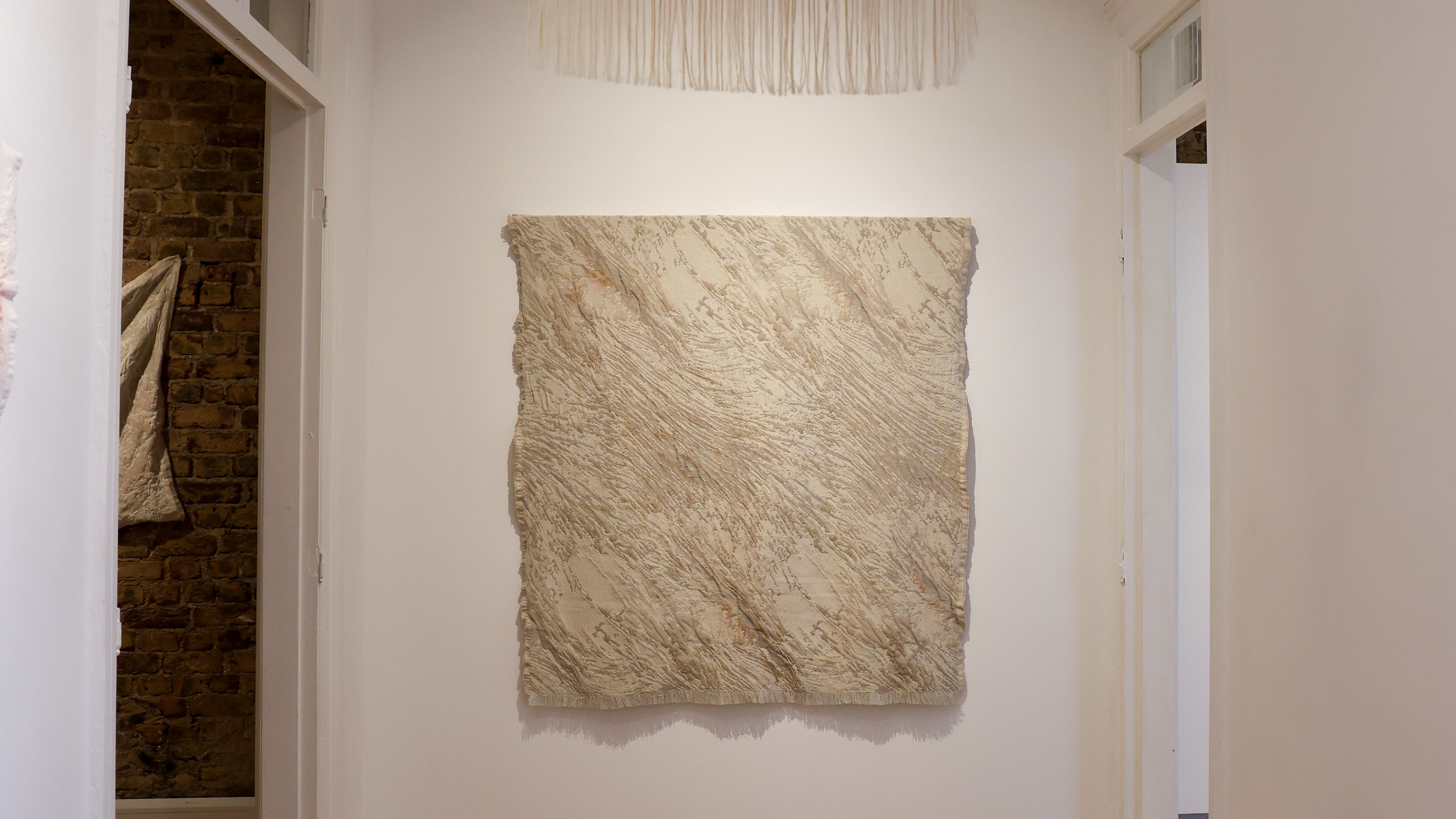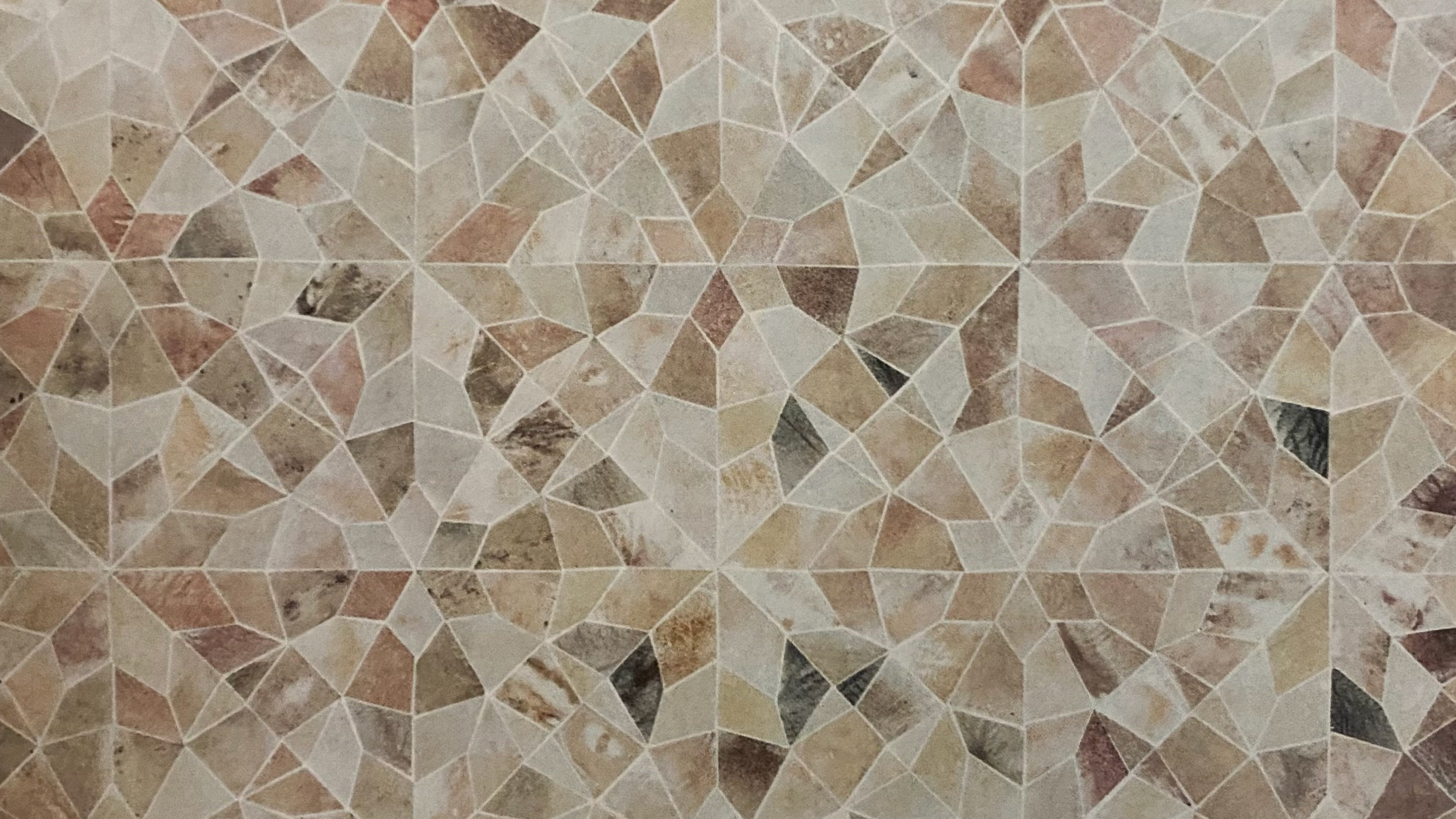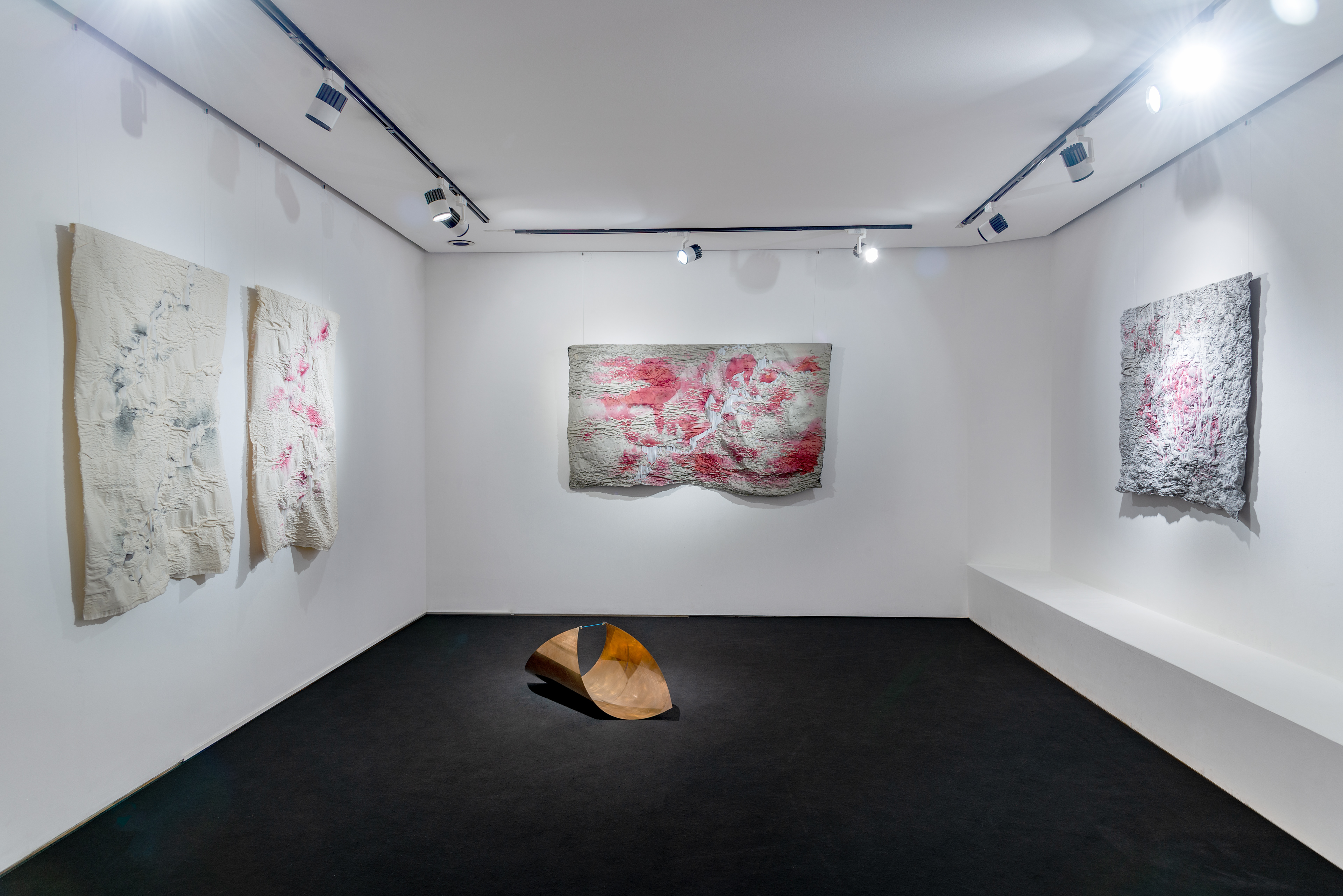
«The Stone Is Not So Worldless After All»
by Gabriela Galati
The stone, both as image and as materiality can be considered to be the thread the union between Caterina Roppo and Léa Dumayet, the artists in dialogue in this exhibition. The stone is commonly defined as hard solid non-metallic mineral matter, and it has been subject of reflection of different disciplines, including philosophy. For example, Martin Heidegger famously defined the stone as «worldless»: According to Heidegger, the stone lacks a world, while animals are poor in world, and human beings, or Dasein, are world-forming. This view, which Heidegger articulated in his 1929-30 work The Fundamental Concepts of Metaphysics: World, Finitude, Solitude has been subject to extensive debate and scrutiny. The idea that stones lack a world and do not possess agency has been called into question by some scholars, among which Maurice Merleau-Ponty, Giorgio Agamben, Jean-Luc Nancy, Jacques Derrida, and Emmanuel Levinas. In fact, in the present show the stone works for both artists as a texture, an element of reminiscence, a materiality and a trigger to create new forms.
Caterina Roppo’s textiles and Léa Dumayet’s sculptures share a common focus on the «intra-action»—the interaction between materials and objects to generate new configurations and meanings—of the organic and the inorganic, as well as on the process of materialising ideas through natural shapes. The texture of the rock, its roughness and uneven character, as well as its different depths and its tactility are evoked in Roppo’s works through the milling of the fabric; in Dumayet, the significance of texture is sometimes directly presented in the stone itself, but also through the combination of various materials, and by the contrast of their different consistencies and touches. While Roppo uses organic woven threads to create three-dimensional textile works that allude the rocky landscape of Mallorca, Dumayet combines natural elements including fossils, stones, dry leaves or animal bones, with industrial materials to create a tension in her sculptures, that appear almost like drawings in the space. As a matter of fact, the classic conceptions of the sculpture as an object-in-space, and the canvas, or wall-work in this case, as bi-dimensional are conceptually reversed here: Dumayet’s sculptures are like «drawings in the space», whereas Roppo’s textiles are hanged to the wall but three-dimensional and almost «spatial».
Léa Dumayet’s sculptures are characterised by a delicate balance held between opposites: the full and the void, the heavy and the light, the stable and the unstable. These opposing characteristics are not separate but rather interdependent, like the concept of Ying and Yang, one feeds into the other in an endless symbiotic loop. Dumayet skillfully employs contrasting textures in her work to amplify the tension of these dualities. The deliberate pairing of smooth industrial metals with rough, untreated natural materials further fosters this contrast. Moreover, this juxtaposition creates a dynamic interplay between the manufactured and the organic, evoking a sense of harmony and discord simultaneously. Equilibrium is also an important aspect of her work. Much like the precarious stability one navigates in one’s daily live, her pieces often seem to hang by a thread, suspended in a delicate balance. This tension is palpable in her compositions, adding depth and intrigue to her work. The resulting configurations exude simplicity, elegance, and power, showcasing how opposites can come together to create a
cohesive whole. The interplay between the smooth, sleek metals and the raw, unrefined natural materials creates compelling visual and tactile stimulation. At the same time, the void itself can be said to be one of her mediums, even part of the “materials” the artist works with. Ultimately, her practice subtlety alludes the complexities of existence, where opposing forces can coexist and even complement each other, resulting in a harmonious whole.


Caterina Roppo works with textiles, specifically made with using the craftmanship technique known as «flotté», in which the filaments of the fabric are left loose to create a sense of movement and fluidity. Her work explores the relationship between organic and inorganic materials in a different way: in working with textiles, she is able to create soft, flexible forms that evoke natural elements, in particular stones. In Roppo’s case, her interest lies in linking certain places with memories, often painful, even traumatic, in order to go beyond them. Her works in this series took on a role in the healing process: The intricate patterns created by the woven threads in the artwork evoke vivid memories of the rugged terrain of Mallorca, the island where the artist resides. The interwoven strands, with their contrasting hues and textures, mirror the rocky landscape that surrounds the artist’s daily life, serving as a tangible representation of their immediate environment. Furthermore, the bold use of red ink and pigments suggests a deeper emotional resonance. The red tones seem to hint at a wound, a source of pain or suffering that the artist has experienced. Yet, the artist has transformed this pain into a catalyst for creativity. In this transformational process, the artwork itself becomes an active participant.
Through the artist’s skilful manipulation of materials and colours, each piece takes on a life of its own, transcending its physical form. It serves as a vehicle for transmuting pain into a new perspective on life. If it is true that this series of works embodies Roppo’s new gaze on life that has been shaped by their personal experiences, her works are not limited to being merely an outcome of personal experience: They possess the ability to transcend individual thoughts and emotions, taking on shapes that go beyond the personal realm. While personal experience can serve as a catalyst for artistic expression, the resulting artwork has the potential, as it is this case, to transmute those experiences into something broader, reaching beyond the confines of the artist’s subjective perspective. In essence, Roppo’s woven threads, the red ink, and pigments in each artwork are not just passive elements, but active agents in this process. Both artists, Roppo and Dumayet, are interested in the process of bringing ideas to life through natural forms, and in exploring the combination of organic and inorganic materials to create new forms, triggering reflections on balance and equilibrium, In this sense, the artists’ oeuvres invite us to reconsider Heidegger’s dichotomy and question the assumed boundaries between the natural and the artificial. Their art suggests that these distinctions may be more complex and interconnected than previously thought. Just as Heidegger’s concept of «worldlessness» of stones has been challenged, Roppo and Dumayet’s creations challenge the viewer to contemplate the agency and worldliness of materials in their practices, prompting us to reflect on our perceptions of the world and our place within it. Here, the stone is not so worldless after all.






